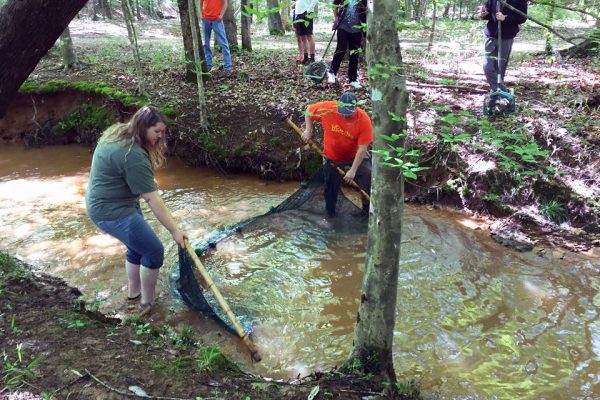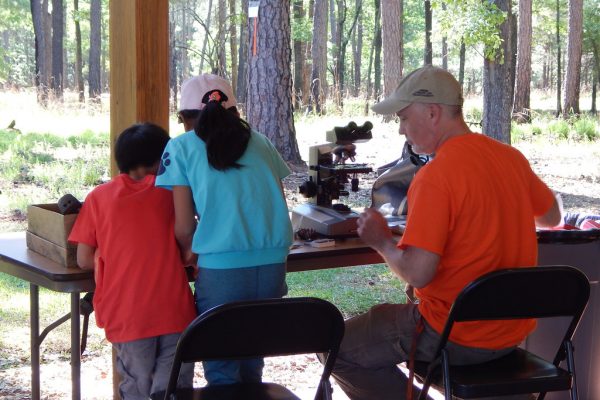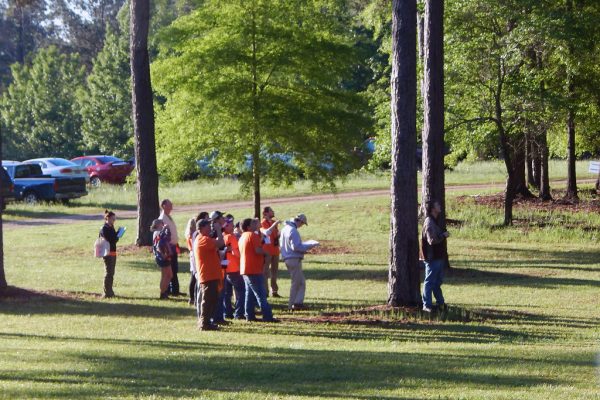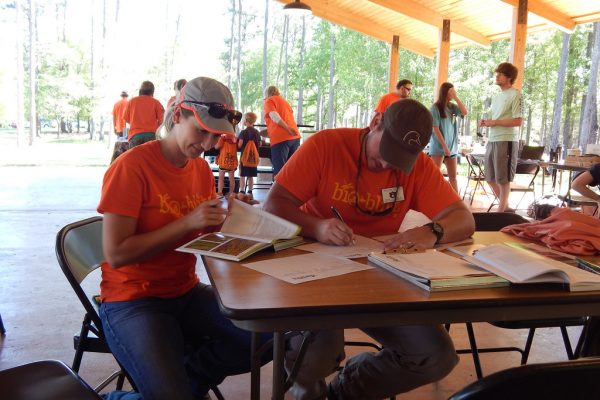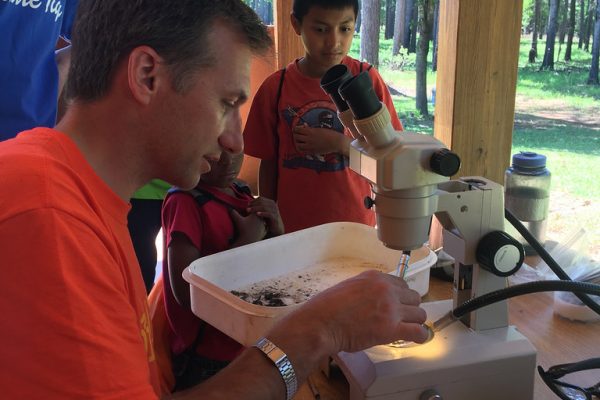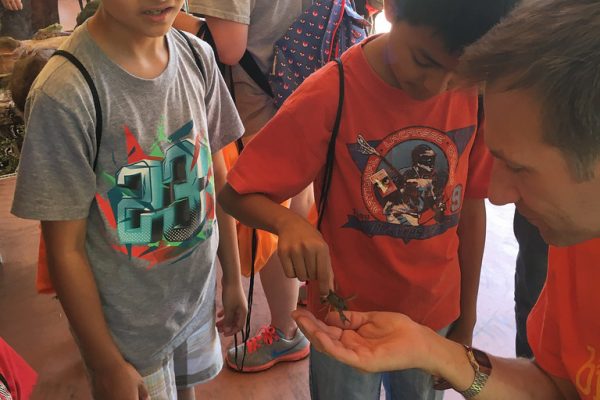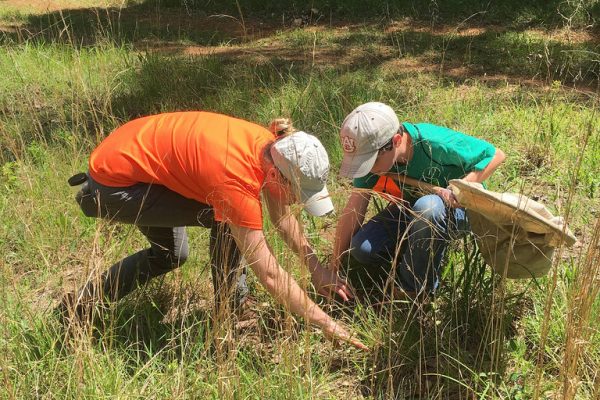Members of the Auburn-Opelika community learned about biodiversity while lending a helping hand to Auburn University scientists during a recent, daylong BioBlitz, cataloging nearly 200 species.
Almost 300 residents gathered in late April at the Mary Olive Thomas Demonstration Forest in Auburn and documented at least 24 types of trees, 39 plants, 40 birds, 26 insects, 18 types of reptiles and amphibians, 10 fish, 12 aquatic invertebrate, 12 mammals, 10 fungi, two crayfish and two varieties of butterflies.
The BioBlitz, designed to record all living species found within an area during a specified period, was hosted by the Alabama Cooperative Extension System and Auburn University School of Forestry and Wildlife Sciences in cooperation with the College of Sciences and Mathematics’ Department of Biological Sciences.
“One cool thing about the event is the public was able to work right beside scientists collecting real data,” said Becky Barlow, Extension forestry specialist and BioBlitz coordinator. “Graduate and undergraduate students took part in the event and even took the lead on some of the topics. This was a great opportunity for them to take things they have learned in the classroom and apply them when interacting with the public.”
Barlow and forestry graduate student Seth Hunt had long considered the possibility of a BioBlitz at the demonstration forest, both for its research value and as an educational tool for the public. Hunt’s impending graduation and the enthusiasm of other Auburn scientists, such as Biological Sciences Assistant Professor and Invertebrates Collections Manager Brian Helms, indicated the timing was right for the event.
“It was great to get the level of involvement from professors, graduate and undergraduate students from multiple schools within the university to help with the BioBlitz,” Hunt said. “I had great fun helping lead the tree and understory events and I think that the public, students and even myself benefited from the experience. I was genuinely humbled by the turnout and hope to make the BioBlitz something that continues to take place.”
Wildlife graduate student Mary Bennett said, “We collected a lot of great data for MOT [Mary Olive Thomas Demonstration Forest] and it was exciting to share in everyone’s enthusiasm for the event.”
The Auburn University Museum of Natural History provided “fossil bags” for children to identify prehistoric insects, while other BioBlitz junior activities included creating casts of animal tracks and building bird houses provided by Home Depot.
The Louise Kreher Forest Ecology Preserve provided live animal encounters of native species of reptiles and amphibians. The Critter Caravan, designed to be a traveling educational program offered for schools and private groups, featured such animals as the corn snake, box turtle and the lesser known legless lizard.
Jennifer Lolley, outreach administrator of the Louise Kreher Forest Ecology Preserve, said, “Anytime you get 300 people out for a first-time science event, it is a big success.” Lolley also noted they hoped to have a BioBlitz at the preserve in spring 2017.
The 2016 BioBlitz was sponsored in part by Home Depot, Publix, Kroger and Sam’s Club. For more information, contact Becky Barlow at 334-844-1019 or rjb0003@aces.edu.
Originally published May 5th, 2016.
(Written by Jamie Anderson)


